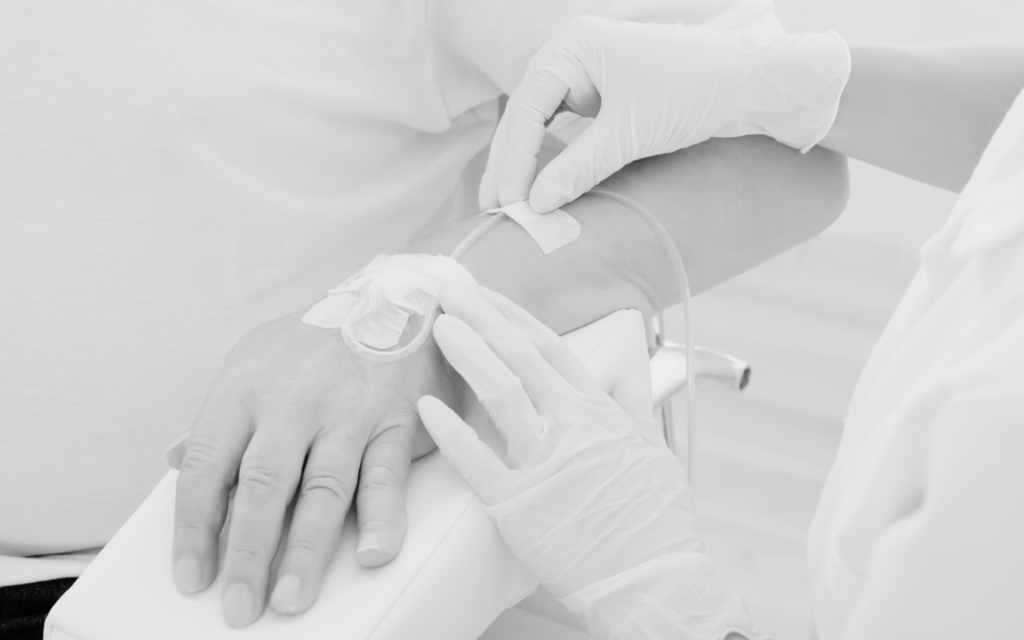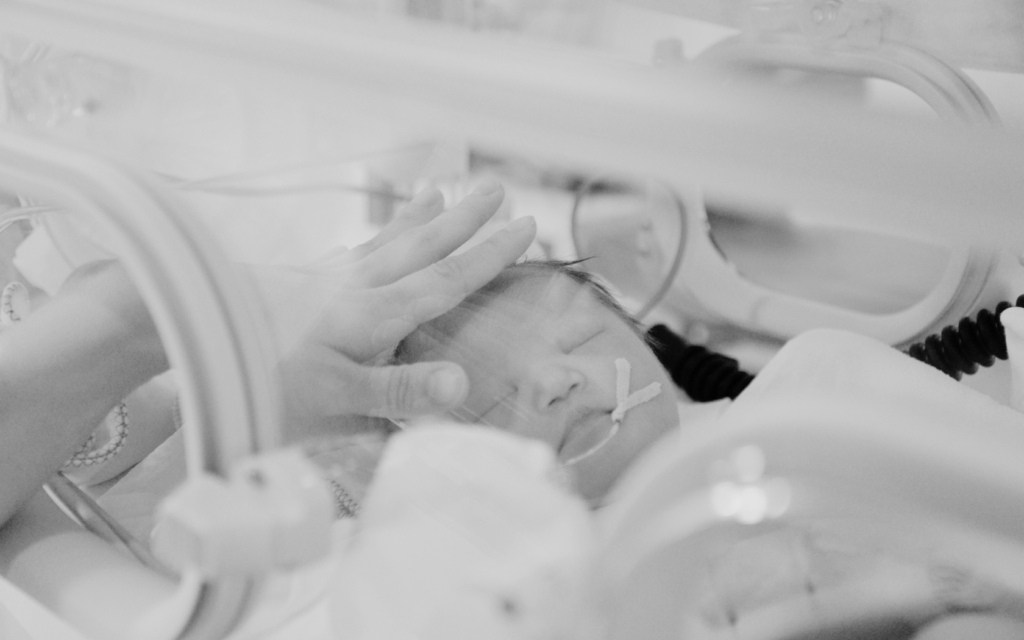When a baby overstays his welcome in the womb, doctors might suggest a Pitocin induction to help him change addresses. But sometimes, pitocin risks outweigh any potential benefits.
Knowing the benefits and risks of pitocin induction can help you make an educated decision before you agree to it. Below, we’ll explain the various pros and cons.
Keep in mind that this article isn’t meant to provide personal medical information. We encourage you to discuss pitocin risks with your doctor.

What is Pitocin?
Pitocin is a medication that can help start or speed up labor in pregnant women. It’s a synthetic (man-made) version of a natural hormone called oxytocin. The body produces oxytocin to cause contractions of the uterus during labor.
Just like the body’s own oxytocin, Pitocin causes the muscles of the uterus to contract. These contractions help to open the cervix (the lower part of the uterus) so that the baby can be born.
Sometimes, a woman’s labor doesn’t start on its own, or it may need to be started for medical reasons. For example, if a pregnancy goes too far past the due date, or if there are health concerns for the mother or baby, doctors might use Pitocin to induce (start) labor.
Pitocin Benefits
In most cases, Pitocin is successful in jump-starting labor, and it doesn’t cause harm. It can make contractions start, or make them stronger and more regular. It can speed up the process of childbirth. That’s a good thing when doctors determine the baby needs to come out right away for medical reasons.
Benefits of pitocin induction include:
- If the amniotic sac ruptures but labor doesn’t start on its own within a certain timeframe, induction can help prevent infections for both the mother and the baby.
- Conditions like gestational diabetes, preeclampsia, hypertension, or other chronic health issues can make continuing the pregnancy dangerous for the mother or baby. Inducing labor with pitocin avoids those risks.
- Studies show pitocin induction at term or post-term can help women avoid the need for a C-section.
- If there’s an infection present (like Chorioamnionitis) inducing labor can help prevent the infection from affecting the baby.
- If there are concerns about the baby’s well-being, such as abnormal fetal heart rate patterns or placental insufficiency, pitocin can help deliver the baby quickly.

Pitocin Risks
Like any medication or procedure, pitocin has the potential to cause harm. That’s especially true if it’s misused. Too much pitocin can make contractions too frequent or too strong. This can put the mother and baby at risk for serious complications.
Potential risks of Pitocin induction include:
- Uterine hyperstimulation (Excessive uterine contractions)
- Uterine rupture
- Fetal distress
- Harm to the baby (brain damage or fetal death) because of fetal distress
- Heavy bleeding after delivery (hemorrhage)
- Infection
- Blood pressure changes
- Nausea and vomiting
It’s important for doctors and nurses to monitor the mother and baby at all times while on pitocin. Once contractions get going, all might seem well. But things can go south quickly.
Doctors administer Pitocin through an IV. Usually, they increase the dosage until contractions happen every 2 to 3 minutes. After that, doctors will either lower the dosage, increase it, or stop administering it altogether. It all depends on how labor is progressing and how the woman responds to Pitocin.
Can Pitocin Cause Hemorrhaging?
In rare cases, Pitocin has caused hemorrhaging (excessive bleeding). It’s not likely to happen if doctors keep a close watch on. But it’s still on the list of Pitocin risks. The risk is much higher with misuse.
Overuse of Pitocin can cause very strong and frequent contractions (uterine hyperstimulation). That might cause trauma to the uterine muscles. After delivery, the uterus needs to contract to stop the bleeding where the placenta was attached. But an overstimulated or tired uterus might not contract properly after delivery. That’s why excessive bleeding might occur.
Can Pitocin Cause Uterine Rupture?
Muscles and ligaments can tear from overuse, such as while practicing sports. Likewise, the muscular wall of the uterus can tear during labor. Uterine rupture is rare, but it’s included in possible Pitocin risks. That’s because Pitocin can cause uterine hyperstimulation. Intense contractions may put too much pressure on the uterus and cause a tear.
If a woman has had previous uterine surgery, the risk of uterine rupture is greater. Women who have had C-sections, fibroid surgeries, or other uterine surgeries might have a weakened area in the uterus that’s susceptible to rupture.

Pitocin Harmed My Baby: What Should I Do?
Did your doctor fail to warn you about Pitocin risks? Did you experience uterine hyperstimulation, hemorrhaging, or a uterine rupture? Were you or your baby harmed because of Pitocin misuse or overuse?
If so, you may have a medical malpractice case. Call us for more information. Should you have a case, our expert lawyers can help you obtain the compensation you deserve.
Pitocin Risks and Benefits FAQs
Some people are “against” Pitocin because using it can pose certain risks. One of those risks is overstimulation to the uterus. It can make contractions stronger and more painful. This can lead to a higher need for pain relief. It raises the risk of complications, such as:
– Uterine rupture
– Fetal distress
– Postpartum hemorrhage
– Interference with natural labor
– Potential need for a C-section
– Inhibiting the release of natural oxytocin (this helps mother and baby bond after birth)
Not everyone opposes Pitocin. In some cases, it can help manage difficult labor. If you have concerns about Pitocin, you should discuss them with your doctor.
Doctors usually stop administering Pitocin when dilation of the cervix reaches 7-8 cm. But it varies depending on the situation and how labor is progressing. Some women may only need it for a few hours. Others might be on it for 12 to 24 hours or even longer.
There isn’t a strict time limit on how long Pitocin can be used. But doctors have to monitor its use carefully to avoid complications. If labor isn’t progressing, or there are signs of distress, doctors might consider other interventions, like a C-section.
Recent research shows it’s better to be induced if you’re 41 weeks along, rather than waiting for labor. But each expectant parent should discuss their specific circumstances with their care providers. Being induced comes with both benefits and risks.
Here are some important statistics about pregnancy after 41 weeks:
17 out of 10,000 mothers experience a stillbirth after 41 weeks.
After 42 weeks, 32 out of 10,000 mothers have a stillbirth.
Many people believe elective induction increases the risk of needing a C-section. But evidence from research doesn’t reflect this.
Waiting for labor after 41 weeks greatly increases the risk of Cesarean (according to the Hannah Post-Term Study).




